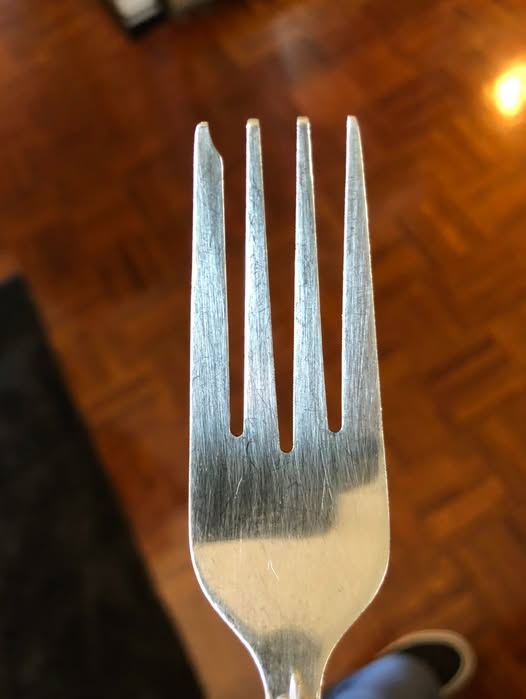ADVERTISEMENT
Mystery Solved: The Real Reason Your Fork Has a “Chipped” Spindle!
Have you ever noticed a small, seemingly insignificant “chipped” spindle on your fork and wondered what it’s all about? It’s a small feature, but it turns out there’s a fascinating reason behind it! This quirky detail isn’t just a design flaw or something to ignore—it’s actually a purposeful feature that has a unique function. Let’s dive into the mystery and uncover the real reason your fork has that little chip on its spindle!
🧐 What Is the “Chipped” Spindle on Your Fork?
First, let’s clarify what we’re talking about. You may have noticed a slight dent or indentation on the handle of your fork near where the prongs connect. It looks like a small chip in the metal, almost as if it was a mistake during manufacturing. But surprisingly, this small design feature is intentional!
🔍 The True Purpose: A Functional Detail
That small “chipped” section on your fork’s handle actually has functional purposes that you may never have guessed. It’s called a “guide notch”, and it’s a design feature with a long history. Here’s why it’s there:
1. Helps With Fork Alignment During Manufacturing
In the early days of mass production, when forks and other utensils were being manufactured in large quantities, the guide notch served as a simple alignment tool during the process. The notch allowed machines to handle, position, and align the utensils correctly, ensuring that the prongs were in line with the handle. Without this small notch, the forks could become misaligned, causing production delays or defects.
2. Ensures a Better Grip for Handling
Some manufacturers of forks and other utensils added the “chip” on the spindle for ergonomic reasons. By creating a subtle indentation, they helped to make the fork easier to grip, especially when handling hot foods or in cases where utensils were placed in a specific orientation for use.
3. Visual Balance and Symmetry
Another possible reason for the chip’s presence is for aesthetic purposes. The small notch creates a visual balance on the fork, making the utensil appear more symmetrical and well-proportioned. Even though it’s not entirely necessary for functionality, it enhances the overall look of the utensil, especially in fine dining settings.
🏰 A Little History: The Evolution of Fork Design
The fork itself has evolved over centuries, and like many household objects, it has gone through design changes based on practicality and manufacturing advancements. The guide notch is just one of many small adjustments made throughout time to ensure forks are better suited to their tasks.
- Medieval Times: The fork was a rare luxury for European nobility, and it had more of a spoon-like appearance with a rounded or flat base.
- 1600s: Forks with tines became more common, designed fo
